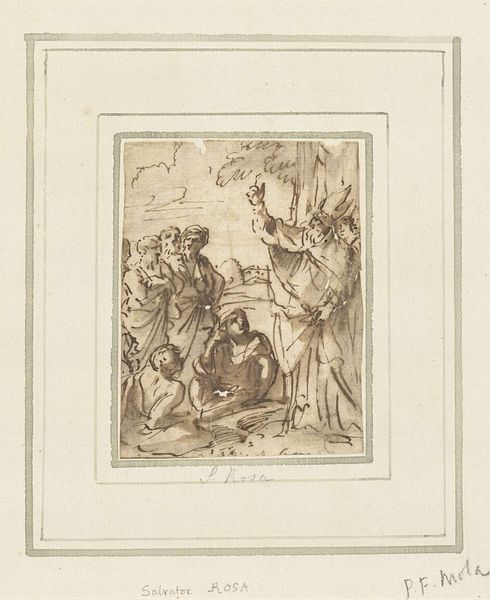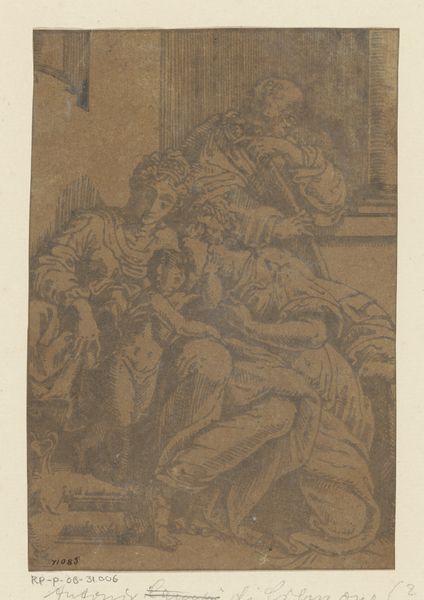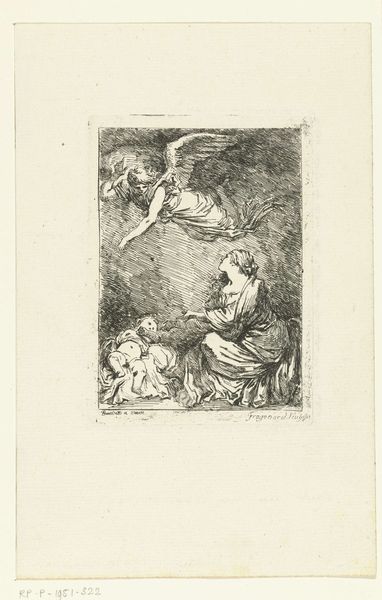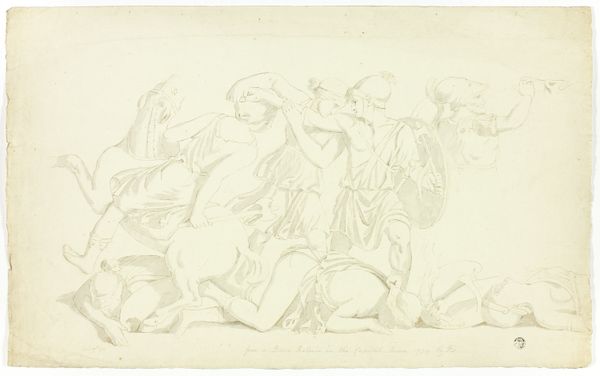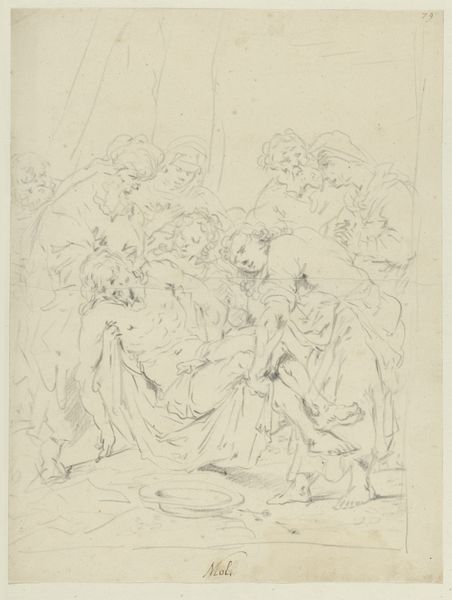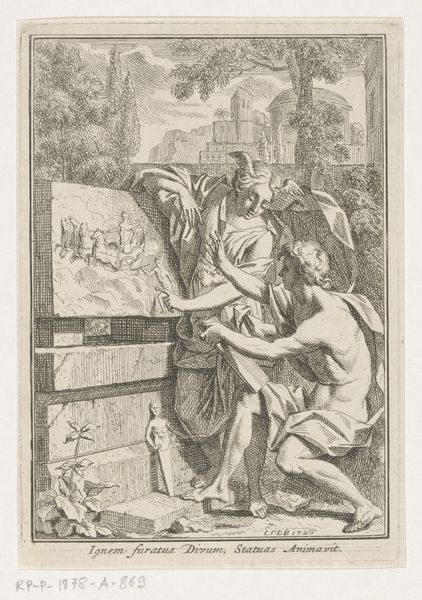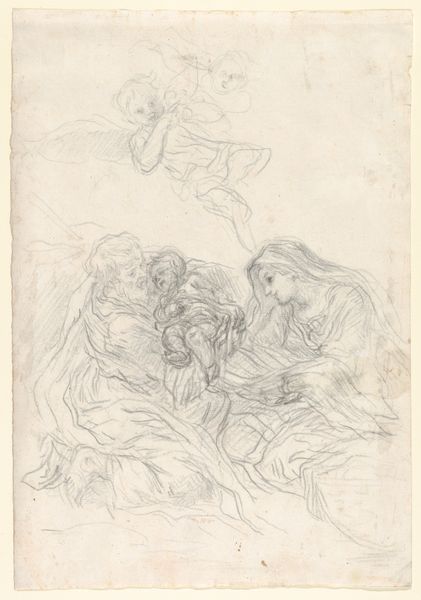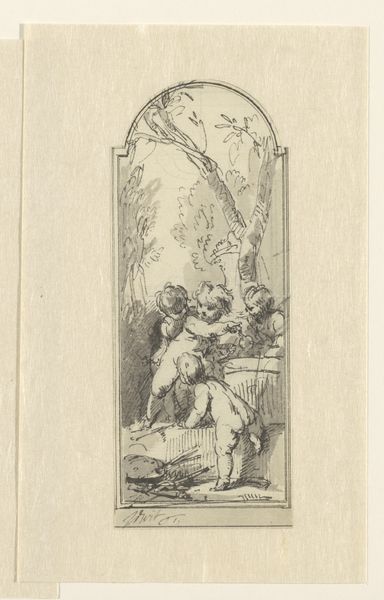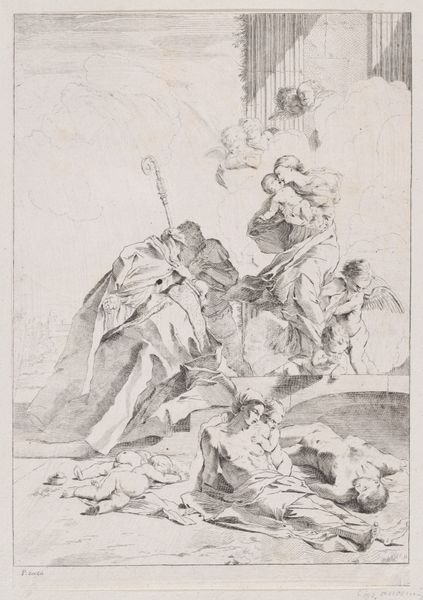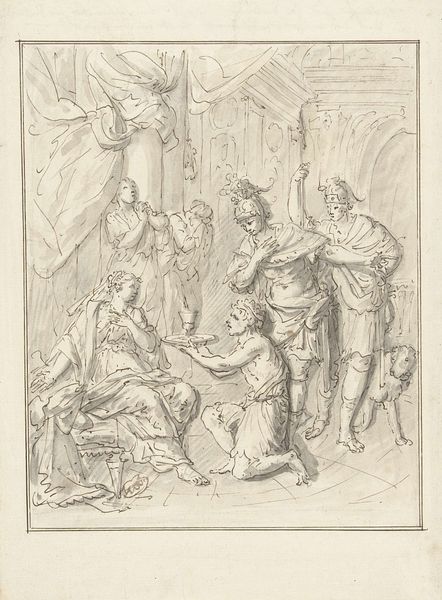
drawing, ink, pen
#
drawing
#
allegory
#
narrative-art
#
baroque
#
pen sketch
#
pencil sketch
#
figuration
#
ink
#
pen
#
history-painting
Dimensions: height 326 mm, width 208 mm
Copyright: Rijks Museum: Open Domain
Curator: Look at the composition of the central figure, her robe falling in elegant pleats, almost classical in its lines. This drawing by Elias van Nijmegen, tentatively dated between 1677 and 1755, is entitled "Allegorie op de Historie." The delicate lines rendered in ink and pen speak to a careful, almost architectural approach to form. Editor: It's visually very light. Almost ethereal. The subdued ink creates this sense of timelessness, of figures emerging from a collective memory. Who exactly are the actors, and how does the history being alluded to engage with its own time? Curator: That's precisely what I find fascinating here. Note how history is presented as a majestic, almost theatrical concept. The allegorical figures surrounding her—a writer taking notes, winged beings— all point to the process of chronicling the past, likely rooted in a Western, Eurocentric mode of storytelling. Editor: And the coffers, those little cherubs, are they meant to convey innocence in service to History, perhaps indicating the material motivations inherent in its recording and writing? Curator: Interesting! It raises pertinent questions about whose voices are included and whose are deliberately excluded, pointing to a historical narrative as constructed and never neutral. Editor: Yes, looking closely, one notes that those motifs like those cherubs appear throughout Dutch Golden Age art, symbolizing a desire to cast a benevolent face onto what were, more than often, skewed power relations. Curator: Absolutely. This piece becomes a space to interrogate not just the past but how it is presented and consumed in visual culture. What’s striking is that this narrative, as visual as it is, requires literacy for the story to unfold. Editor: I agree. The artist compels us to see history not as a static narrative but as a set of relations. And this emphasis makes "Allegorie op de Historie" intensely pertinent, now as then. It becomes imperative to recognize the potential complicity within established systems. Curator: Well said! Seeing through your eyes allows me to consider the role that visual narratives play in maintaining—or challenging—societal norms, and vice versa. Editor: And I appreciate the emphasis on form—reminding me that these grand narratives are always carefully and deliberately built through concrete structures that need dismantling.
Comments
No comments
Be the first to comment and join the conversation on the ultimate creative platform.
